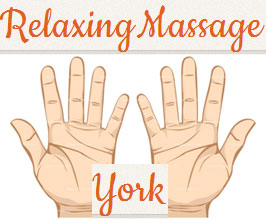Thigh Stiffness – Massage for Release of Tension in Hamstrings
Massage has been proven to be helpful in the management of pain in the hamstrings. Your hamstrings are 3 muscles at the back of your thigh. They are in constant use when ever you are on your feet or doing sport. You can damage your hamstring by overzealous exercise or by being overweight.
Dynamic massage therapy helps people manage painful or stiff hamstrings. The hamstrings are a group of muscles lying between the hip and the knee at the back (posterior) of the thigh. These are in use when you are walking, running or doing any other sporting activity and must be in good working order. Tight, painful hamstrings and other damage can occur for a number of reasons, especially to active and overweight people.
Relaxing Dynamic Massage for Tense, Stiff or Painful Thighs
It has been proven tightness in your hamstrings can be relieved with some simple massage techniques. D Hopper et al (2005) studied and number of sports people and found that massage therapy (DSTM Dynamic Soft Tissue Manipulation) improved the flexibility of the hamstrings. Positive reactions were seen from Swedish but, more so from DSTM techniques. These specialised techniques include;
- Effleurage to warm up the tissues.
- Palpation (touching and feeling for hard, tense muscle tissue).
- Lifting the leg up to the therapist’s shoulder height to tighten the hamstring.
- Use of the fist in longitudinal (downward) strokes (behind the knee to the buttocks) to push out toxins and relax tension in the areas identified as tight during palpation.
Also D Behm PhD et al (2014) says massage is beneficial to stiffness and pain under pressure in the hamstrings. Additionally, Guo J et al (2017) concludes in Shanghai University of Sport review massage alleviates delayed onset muscle soreness. So there quite a lot of scientific proof of massage works out there.
Where and What are the Hamstrings
The hamstrings are a group of 3 muscles in the back of the upper leg or thigh area. There are 3 main muscles that make up the hamstrings. These are (from lateral to medial or outside to inside); biceps femoris, semitendinosis and semimembranosis.
- Biceps femoris long head – this is the larger and more superior (near the surface) of the 2 parts of this muscle.
- Biceps femoris short head
- Semitendinosis
- Semimembranosis
Why are the Hamstrings so Important?
The suppleness of this muscle group is vital to movement. To walk, run, cycle or participate in any other sports, your thighs have to be in good working order. D Hopper et al (2005) tells us, to perform better during any of these activities you have to have good flexibility and extensibility there. It is pretty obvious that if you are in pain due to strains or tight hamstrings, movement using your legs will not be that great.
Causes of Damaged and Painful Hamstrings
Sporting injuries are a major culprit here. It is common knowledge that damage to the hamstring can take place during the sever stresses of competition. DOMS (delayed onset muscle soreness) is also caused by strenuous exercise. Additionally, being overweight can effect your hamstrings. If your legs are carrying a lot of weight whenever your move, damage and strains can occur. Overzealous stretching of your thighs can also damage them. If your muscles are cold then you can damage yourself if you stretch them too hard. It is often best to stretch gently as you warm up, increasing the stretches as your muscles, ligaments and tendons get more flexible, rather than pulling them too hard. Just like other materials (rubber for example) body tissues flexibility increases as they get warmer.
References:
D Hopper et al (2005) Dynamic soft tissue mobilisation increases hamstring flexibility in healthy male subjects [Online] available from https://bjsm.bmj.com/content/39/9/594.short (Accessed 23/01/2019)
D Behm PhD et al (2014) SPECIFIC AND CROSS OVER EFFECTS OF MASSAGE FOR MUSCLE SORENESS: RANDOMIZED CONTROLLED TRIAL [Online] available from https://www.ncbi.nlm.nih.gov/pmc/articles/PMC3924612/ (Accessed 24/01/2019)
J Guo et al (2017) Massage Alleviates Delayed Onset Muscle Soreness after Strenuous Exercise: A Systematic Review and Meta-Analysis. [Online] available from https://www.ncbi.nlm.nih.gov/pubmed/29021762 (Accessed 25/01/2019)
